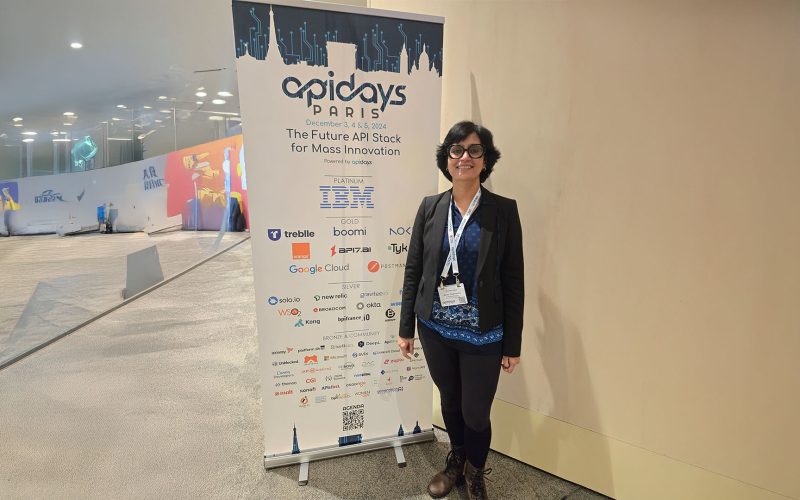Your strategy might look flawless on paper. The roadmap is clear, the tech stack is modern, and the ambition is real. But there’s one silent variable that can quietly unravel even the best laid plans: team exhaustion. Daniel J. Jacobs, an enterprise transformation advisor with over 20 years of experience leading digital change in high growth companies, sees this pattern across industries. Strategy doesn’t fail because people resist. It fails because they’re depleted.
“Burnout doesn’t announce itself. It just shows up in silence, in missed deadlines, skipped standups, and good people quietly quitting,” Jacobs explains. “It’s not defiance. It’s a collapse in capacity.” At a recent enterprise forum, Jacobs shared six recovery strategies rooted in data, not platitudes. What leaders choose to do next will determine whether their strategy gains traction or collapses under the weight of change fatigue.
Stop Pushing Harder, Start Measuring Readiness
When projects stall, most executives respond by turning up the pressure. They schedule more meetings, shorten timelines, and start talking about “velocity.” It backfires every time. “You can’t squeeze speed from an exhausted system,” Jacobs warns. “You have to check the pulse before you prescribe more effort.”
He recommends using color-coded fatigue maps and quick pulse surveys before launching major initiatives. Leaders should ask how overwhelmed teams feel, what past changes remain unresolved, and how much emotional bandwidth truly exists. Siemens applied predictive readiness assessments ahead of key digital rollouts and saw measurable improvements in adoption rates (MIT Sloan, Predicting Digital Transformation Success, 2022).
Reducing Overload to Boost Output
Between 2016 and 2022, the average employee went from managing two change initiatives a year to ten, a 400% increase (Gartner, 2023). Jacobs calls this “initiative stacking,” and it’s completely unsustainable. “Leaders think every initiative is urgent. But if everything’s a priority, nothing gets done well,” he says. The solution requires auditing the change portfolio, pausing low-impact work, and sequencing critical efforts properly. Gartner found that organisations limiting simultaneous initiatives outperformed their peers by 34% (PMI, “Pulse of the Profession,” 2021). This isn’t about doing less work, it’s about doing the right work at the right time.
Train Managers to Spot the Drop Before It Spreads
Your managers are the front lines of energy detection. They see warning signs before the metrics do, when participation dips, ideas dry up, and absence patterns spike. But most aren’t trained to interpret these signs properly.
Jacobs recommends a weekly five-minute check-in cadence where managers ask specific questions:
- What help would make the biggest difference?
- What’s draining your team this week?
- Where are we stretched too thin?
“Burnout doesn’t always show up in sick days,” he says. “Sometimes it’s just silence in meetings.” Training managers to recognize these early warning signs can prevent larger problems from developing.
Translate Strategy Into Local, Practical Terms
Big visions lose power when they don’t land at the team level. Strategy must be deconstructed into function-specific roadmaps that people can actually understand and act on. Jacobs advises creating one-page team briefs with clear roles, short timelines, and plain language. “People don’t act on slogans,” he says. “They act on clarity.” When staff know exactly how their work fits into the wider strategy, momentum builds without additional energy cost. This approach transforms abstract corporate speak into concrete, actionable steps that teams can actually execute.
Jacobs often sees executives unintentionally sow confusion by speaking out of sync. One VP says “transformation” while another says “stability,” and the team gets whiplash trying to figure out the real direction. “Mismatched messaging isn’t just confusing, it’s exhausting,” he says. The fix requires scheduling leadership alignment meetings before rollout, agreeing on specific phrasing, and rehearsing consistency across all communications. When every channel delivers the same message, trust grows and fatigue drops. This coordination effort pays dividends in team confidence and execution speed.
Let the Teams Lead the Change
Empowerment isn’t a luxury, it’s a recovery mechanism. When peer champions drive initiatives, engagement spikes because teams listen differently when the message comes from one of their own.
Jacobs encourages leaders to formalise this:
- Assign cross-functional change champions
- Give them tools to collect feedback and propose improvements
- Recognise their efforts publicly
“People don’t need another top-down campaign,” he says. “They need a signal that their voice matters.” This bottom-up approach creates ownership and reduces the resistance that typically accompanies change initiatives.
The Strategic Cost of Exhaustion
The damage isn’t hypothetical, it’s happening across industries. In healthcare, rushed digital rollouts led to clinician burnout and error spikes (JAMIA, 2021). In logistics, workforce turnover hit 40% due to rapid operational changes (Supply Chain Dive, 2022). In financial services, tech adoption lagged because teams were simply too drained to adapt (Forrester, 2022). “Reset costs exceed pause costs every time,” Jacobs reminds leaders. “Recovering broken trust is more expensive than pacing your rollout properly.” The financial and operational costs of pushing exhausted teams far outweigh the benefits of slowing down and doing things right.
Recovery Isn’t Soft, It’s Strategic
Companies that invested in recovery outperformed during crisis periods. IBM under Lou Gerstner is a classic example, where strategic pacing, leadership alignment, and local team empowerment helped the company rebuild from the inside out (HBR, “Leading Change at IBM,” 2002). Amazon’s 2020 playbook followed a similar rhythm with phased initiatives, clear messaging, and team-led feedback loops. The NHS learned the hard way when its digital health programme improved only after fatigue mitigation strategies were added to the playbook (BMJ, 2021). Jacobs sums it up: “Fresh teams can transform anything. Tired teams can’t transform a thing.”
Track Energy Like You Track Revenue
Energy isn’t abstract, it’s measurable and predictive. Jacobs encourages executive teams to track stress-related absence rates, training completion metrics, exit interview fatigue themes, voluntary overtime participation, and real-time engagement scores. When these indicators drop, strategy execution follows the same downward trajectory. “You wouldn’t launch a product with no budget,” he says. “So why launch a strategy with no energy?” Treating team energy as a finite resource that needs monitoring and management is essential for sustainable transformation.
The market will keep demanding change, but that doesn’t mean your people can absorb it all at once. Pacing, clarity, alignment, and empowerment aren’t soft skills, they’re performance levers that determine success or failure. Jacobs offers a parting challenge: “What step will you take this quarter to rebuild your team’s energy before asking them to carry another strategy on their backs?” Because in 2025, competitive advantage won’t just belong to the most innovative. It will belong to the most resilient.
Follow Daniel J. Jacobs on LinkedIn for more insights on leading change with resilience at the core.












